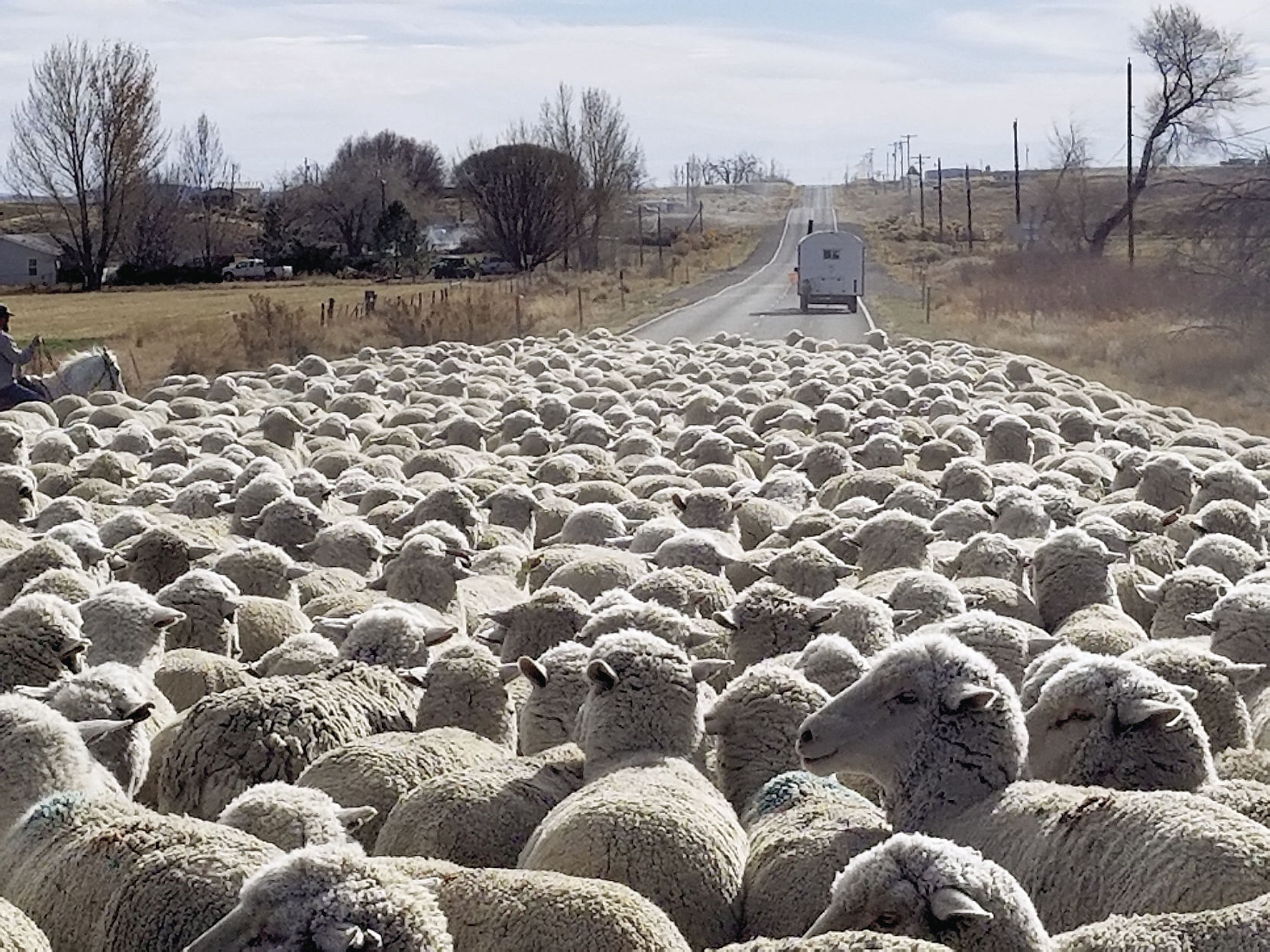If you think about the life of a sheep, it covers some of the most picturesque landscapes that we have to offer around here.
Not too many weeks ago the Wade Jensen family brought some 3,400 head of sheep off the hillsides of the mountains surrounding Joe’s Valley, Olsen Bench and Black Canyon and brought them down to a variety of rented pastures surrounding Cleveland. Here they have been grazing before being herded to their winter pastures in Cleveland.
Wade Jensen and his wife Cassie, along with their two sons, Jessie and Kevin, head up what they say is the last of the range sheep herds in Emery County.
“Everyone else has quit,” commented Wade. “Because of that ours is a little larger than it used to be.”
But keeping the range herd going over the years has been difficult.
The Jensen’s started out with winter grazing permits in the San Rafael Swell as well as other areas in the state from Uintah County to over near Delta.
Problems with grazing permits, possible problems of intermingling sheep with big horn sheep and having to move the herds due to what loco weed does on sheep have kept the Jensen’s guessing just how many sheep they can run.
At one point Wade Jensen sold all but 200 head of sheep, but the herd has now built back up to 3,400 head with the.
Because the Jensen’s can find private property for grazing as well as their ability to raise or purchase their own hay, they have less of a need for winter grazing rights from the government. They have used crop farms in Delta for winter grazing for the past two years and with hay prices where they are at today, they will continue doing that this year.
So far it has been a good year for sheep. Wade stated that wool prices are steady as well as prices for the lambs.
According to market reports over the past 10 years lamb consumption has stabilized at around one pound per person in the United States. This average accounts for as much as two-thirds of Americans who do not eat lamb, but the lamb lovers eat upwards of 2 pounds per person.
There are about 88,000 sheep producers in the U.S. who generate a total economic impact for the nation of $5.8 billion.
“This is a business that you have to be all in through the good times as well as the bad times,” said Wade Jensen. “And right now we are all that is left in Emery County when it comes to range herds.”
Letting the lambs come home

This is the view from a cars windshield as they work their way up through the herd to pass. There were more than 890 head of sheep in this herd owned by Wade, Cassie, Jessie and Kevin Jensen.
